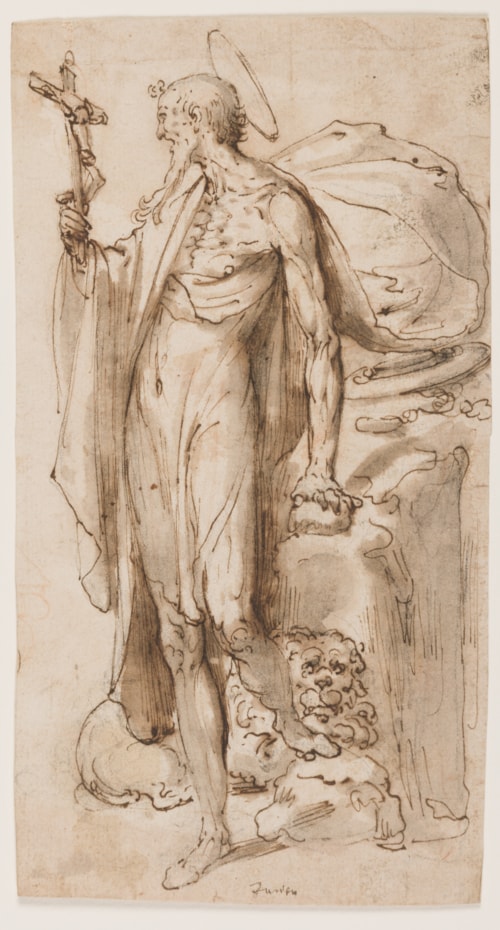
Giovanni Battista LOMBARDELLI
Montenuovo (Ostra Vetere) c.1537 - Perugia 1592
Biography
Born in the Marchigian hill town of Montenuovo (today called Ostra Vetere), Giovanni Battista Lombardelli is therefore often referred to in documentary sources as Giovanni Battista della Marca or Giovanni Battista Montano. An accomplished fresco painter, he was a pupil of Marco Marchetti, called Marco da Faenza, and Raffaellino da Reggio. The earliest phase of his independent career saw Lombardelli working in several churches in his home town of Ostra Vetere; a fresco of the Nativity in one church is dated 1566 and two paintings in another are dated 1574. Between 1579 and 1581 he worked in Perugia, where he painted lunette frescoes of scenes from the life of Saint Dominic for the cloister of the church of San Domenico and another cycle of cloister frescoes of Franciscan subjects for San Girolamo; all of these works are now lost.
Lombardelli began working in Rome in 1575, mainly as a fresco painter. At the Vatican, he painted a series of allegorical figures for the Sala Vecchia degli Svizzeri and, under the supervision of Lorenzo Sabatini and Marco da Faenza, contributed to the decoration of the logge vaticane. Other significant commissions included the fresco decoration of the Palazzo di Montecavallo, where he worked alongside Pasquale Cati between 1583 and 1585. Lombardelli was active in a number of Roman churches, including the Trinità dei Monti, San Pietro in Montorio, Santo Spirito in Sassia and Santa Maria sopra Minerva, as well as in the Palazzo Cesi. Among his most important works is a narrative fresco cycle of scenes from the life of Saint Anthony Abbott in the nave of the Roman church of San Antonio Abbate, painted in the mid-1580s and now largely destroyed.
Although he enjoyed a successful career as a fresco painter, Lombardelli was not always highly regarded by some early artists and biographers; both Carlo Cesare Malvasia and Giovanni Pietro Bellori mention the same anecdote in which Annibale Carracci, seeing a young painter copying one of Lombardelli’s lunette paintings in San Pietro in Montorio, dissuaded him from doing so, so as not to be tainted by the defects of the artist.
Apart from his work in Rome, Lombardelli was active in the Marches and Umbria, notably painting frescoes in the Palazzo Cesi in Aquasparta and an altarpiece of the Crucifixion for the church of Santa Cecilia, likewise in Aquasparta, as well as the chapel of the Madonna in the Sanctuary of Mongiovino in Panicale. He also worked in the Palazzo Buzi in Orvieto and in the Basilica of the Santa Casa in Loreto. The last years of the artist’s career were spent in Perugia, where he decorated the choir of the church of San Pietro, and also at the Palazzo dei Priori.


